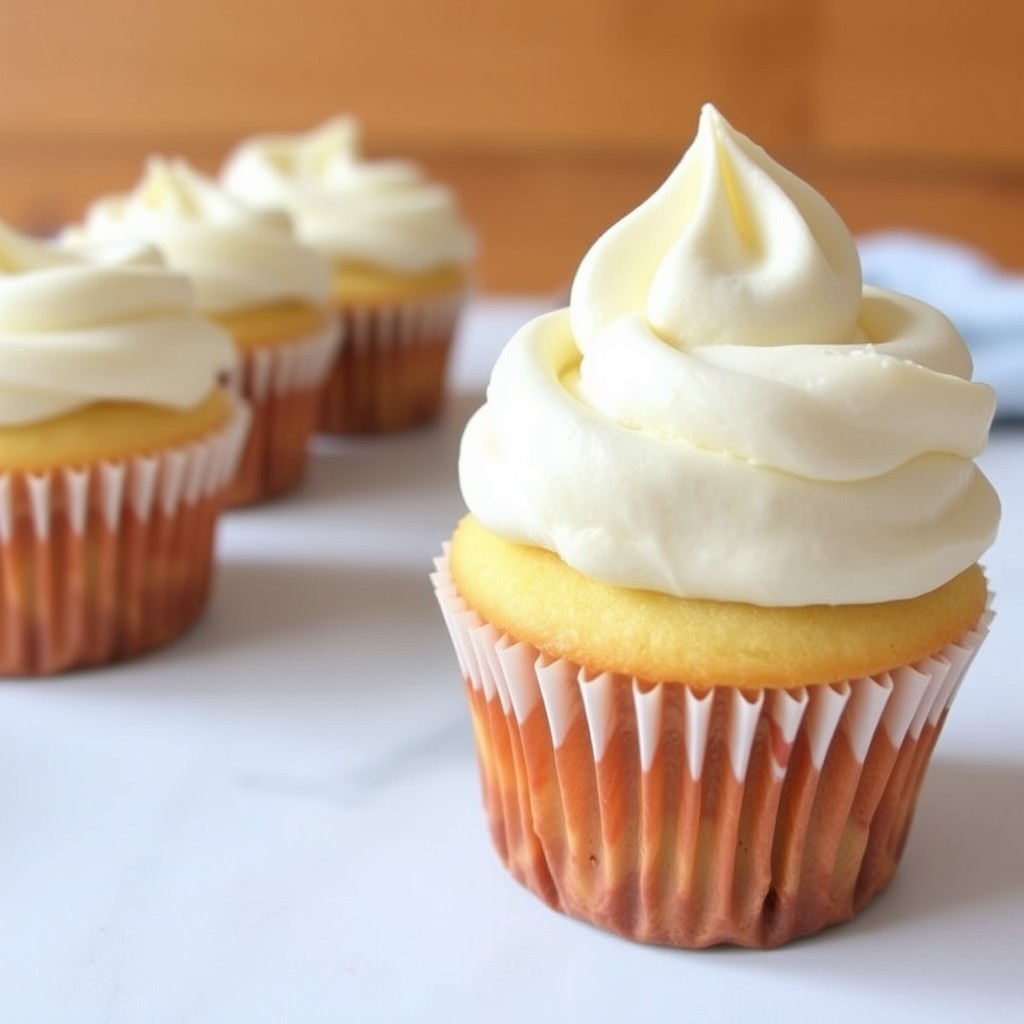Buttercream frosting is a staple in cake decorating.
It’s versatile, easy to make, and delicious — perfect for frosting cakes, decorating cupcakes, and even piping intricate designs.
While there are many types of buttercream, simple American buttercream is the best place for beginners to start.
It’s quick, requires minimal ingredients, and delivers consistently great results.
In this guide, you’ll learn everything you need to know about making a simple buttercream frosting, including ingredients, step-by-step instructions, variations, troubleshooting tips, and professional techniques.
Why Buttercream Frosting Is Essential
Buttercream frosting:
- Adds sweetness and flavor to cakes and cupcakes
- Seals in moisture, keeping cakes fresh longer
- Provides a base for decorations like flowers, borders, and writing
- Allows coloring and flavoring for endless creativity
Tip:
Homemade buttercream tastes far superior to most store-bought versions — and it’s much more customizable!
Ingredients Needed for Simple Buttercream Frosting
Here’s what you’ll need:
- 1 cup (2 sticks) unsalted butter, at room temperature
- 4 cups powdered sugar (also called confectioners’ sugar)
- 2–4 tablespoons heavy cream or milk
- 1–2 teaspoons pure vanilla extract
- A pinch of salt (optional, but highly recommended)
Optional variations:
- Food coloring
- Flavor extracts (almond, lemon, peppermint, etc.)
Tip:
Use high-quality butter and pure vanilla extract for the best flavor.
Step-by-Step Instructions to Make Simple Buttercream
Step 1: Prepare Your Ingredients
Make sure your butter is softened to room temperature — about 68–72°F (20–22°C).
It should be soft enough to dent when pressed but not melted.
Sift the powdered sugar to remove lumps for smoother frosting.
Step 2: Beat the Butter
In a large mixing bowl, beat the butter using an electric mixer (stand or hand) on medium speed for about 2–3 minutes until it’s creamy and light in color.
Tip:
Beating the butter well at this stage makes the frosting lighter and easier to spread.
Step 3: Add Powdered Sugar Gradually
Reduce mixer speed to low and gradually add the powdered sugar, about ½ cup at a time.
Mix well after each addition to avoid a sugar cloud!
Once all sugar is incorporated, increase the speed to medium and beat for another 1–2 minutes.
Step 4: Add Vanilla and Cream
Add the vanilla extract and 2 tablespoons of heavy cream or milk.
Beat again until the frosting is light and fluffy.
Tip:
Add more cream, one tablespoon at a time, if you prefer a softer consistency.
Step 5: Adjust Texture
- Too thick? Add a little more cream or milk.
- Too thin? Add a little more powdered sugar.
Aim for a smooth, spreadable texture that holds its shape but is easy to work with.
How to Color Buttercream Frosting
Adding color to buttercream is simple:
- Use gel food coloring for vibrant colors without changing the consistency.
- Add color a little at a time — colors deepen as they sit.
- Mix thoroughly for even coloring.
Tip:
If you need very dark colors (like black or deep red), let the frosting rest after coloring for an hour to deepen naturally.
How to Flavor Buttercream Frosting
Besides vanilla, you can infuse your buttercream with different flavors:
- Almond extract: Use sparingly — very strong!
- Lemon zest or extract: Brightens the frosting.
- Peppermint extract: Great for holiday cakes.
- Cocoa powder: For a simple chocolate buttercream (replace part of the powdered sugar).
Tip:
Always taste as you add flavorings — some extracts are much stronger than others.
How to Store Buttercream Frosting
If you make your buttercream ahead of time:
- Room Temperature: Store in an airtight container for up to 2 days.
- Refrigerator: Store for up to 1 week. Let it come to room temperature and rewhip before using.
- Freezer: Freeze for up to 3 months. Thaw overnight in the fridge, then rewhip.
Common Buttercream Problems and How to Fix Them
Problem 1: Frosting Too Stiff
Cause:
Too much powdered sugar or too little liquid.
Solution:
Add cream or milk, 1 tablespoon at a time, beating between additions.
Problem 2: Frosting Too Soft
Cause:
Butter too warm or too much liquid.
Solution:
Add powdered sugar a little at a time or chill the frosting briefly before using.
Problem 3: Frosting is Grainy
Cause:
Unsifted powdered sugar or under-beaten butter.
Solution:
Sift sugar before using. Beat butter thoroughly until creamy.
Problem 4: Air Bubbles in Frosting
Cause:
Over-whipping at high speed.
Solution:
Mix frosting on low speed for 1–2 minutes at the end to remove excess air.
Tips for Frosting Cakes and Cupcakes
- Always cool cakes completely before frosting.
- Apply a crumb coat (thin layer of frosting) and chill before final frosting.
- Use an offset spatula for smoother application.
- A bench scraper is great for sharp sides on layer cakes.
- Practice basic piping techniques on parchment paper before decorating.
Simple Variations of Basic Buttercream
Chocolate Buttercream
- Add ½ cup cocoa powder to the butter before adding powdered sugar.
- Adjust consistency with a little more cream if needed.
Lemon Buttercream
- Replace vanilla extract with lemon extract.
- Add 1–2 teaspoons of lemon zest for extra flavor.
Strawberry Buttercream
- Add ½ cup of pureed, strained strawberries.
- Reduce cream slightly to adjust consistency.
Final Thoughts: Buttercream is the Baker’s Best Friend
Making buttercream frosting is an essential skill that opens the door to endless cake decorating possibilities.
Once you master the simple technique, you can customize colors, flavors, and textures to match any cake design you imagine.
Remember:
- Start with high-quality ingredients.
- Beat butter until creamy.
- Adjust texture with small amounts of liquid or sugar.
With a little practice, your homemade buttercream will rival any professional bakery’s!
